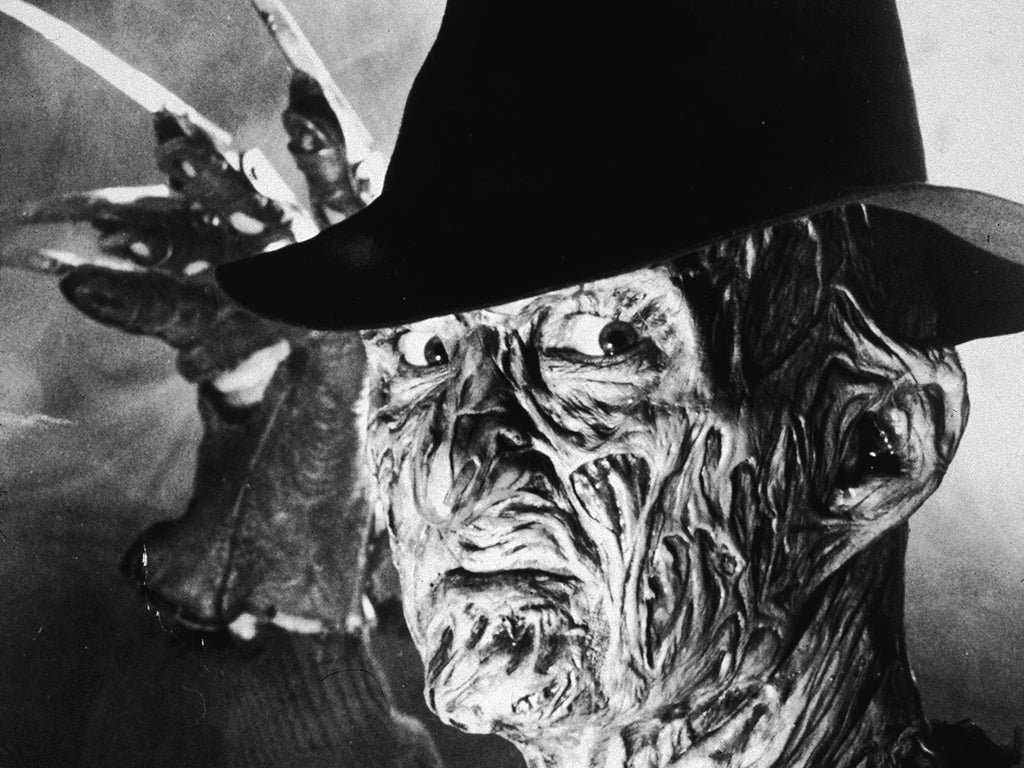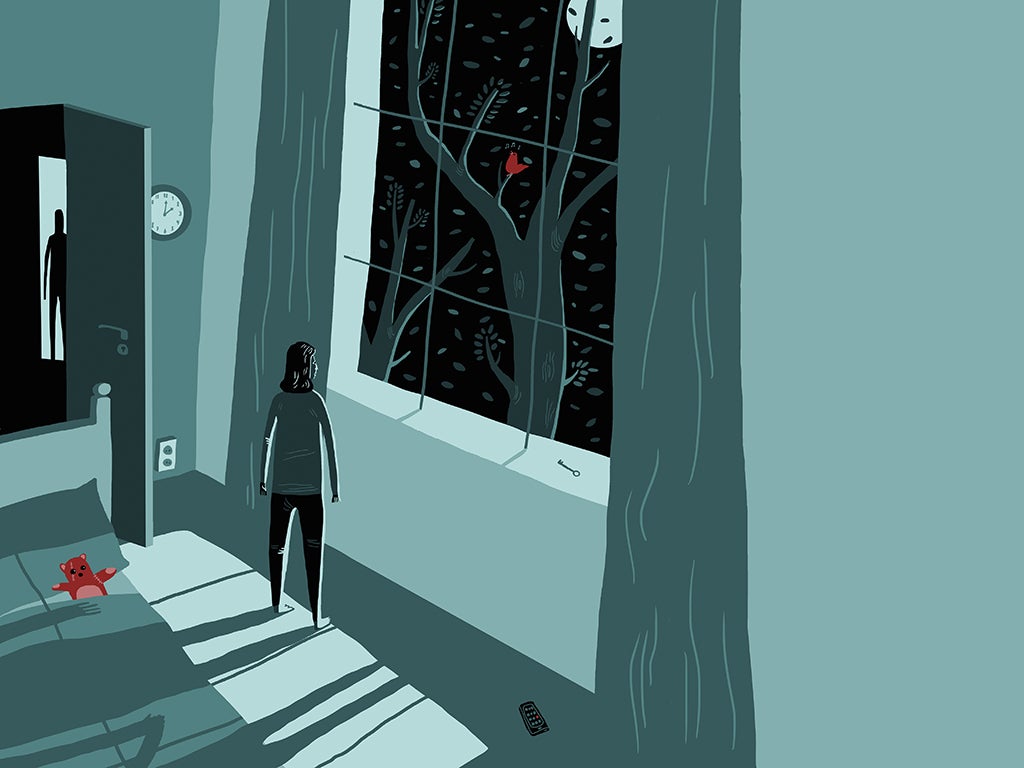The Independent's journalism is supported by our readers. When you purchase through links on our site, we may earn commission.
Why we have nightmares, and what they mean
Nightmares fall into two categories: post-traumatic nightmares and garden-variety nightmares. The latter have a fantastic narrative and can be interpreted, with the terrifying threat often one seen in film or fiction - a witch chasing you, teeth falling away, or a murder

Your support helps us to tell the story
From reproductive rights to climate change to Big Tech, The Independent is on the ground when the story is developing. Whether it's investigating the financials of Elon Musk's pro-Trump PAC or producing our latest documentary, 'The A Word', which shines a light on the American women fighting for reproductive rights, we know how important it is to parse out the facts from the messaging.
At such a critical moment in US history, we need reporters on the ground. Your donation allows us to keep sending journalists to speak to both sides of the story.
The Independent is trusted by Americans across the entire political spectrum. And unlike many other quality news outlets, we choose not to lock Americans out of our reporting and analysis with paywalls. We believe quality journalism should be available to everyone, paid for by those who can afford it.
Your support makes all the difference.Psychologists usually define a nightmare as 'a terrifying dream'. Most children experience nightmares - some even nightly, but they usually outgrow them. Adults with frequent nightmares have traits related to either the 'terrifying' aspect and/or to the 'dream.'
These are:
1) Anxiety: Often the same people experiencing terrifying dreams are more afraid of their daytime world.
2) High dream recall, and vividness of dreams and waking imagery: Many of the people with frequent nightmares also report more vivid, beautiful, 'peak experience' dreams.
Most of the drugs which increase nightmares also increase either general anxiety (some malaria meds) or vivid dreaming in general (antidepressants). Likewise rarebit (cheese) or spicy foods may wake you up more to remember all sorts of dreams but are not specific to nightmares. So nightmares are a result of anxiety or a vivid dream-life - or often both.
Nightmares themselves fall into two categories. One is 'garden-variety' nightmares. Much like other dreams, these have a fantastic narrative, and the terrifying threat is often one seen only in film or fiction - a witch is chasing you, teeth or other body parts falling away, a completely law-abiding dreamer who has inexplicably murdered someone.

There is a flood of relief upon awakening and finding oneself in the sane, safe world. Some people want to stop these nightmares - but some find them interesting or don’t much mind them. Others downright enjoy them: I’ve heard many people compare their nightmares to the thrill of horror films.
Dreamers distressed by garden-variety nightmares shouldn’t just try to suppress them, however. It's more useful to reflect on your nightmare or interpret them with. You may gain insight into stresses and fears - (see below for more on how to do this). And nightmares can inspire creative types. When I was researching my book, The Committee of Sleep, I found writers and artists used their dreams in their work, but nightmares had an especially high rate of incorporation - probably because they are such unusually dramatic, powerful dreams.
The second category of nightmares is the one no one wants to have: post-traumatic nightmares. After a person has suffered a horrific event, they tend to have recurring dreams which re-enact that event - either completely literally or often with a bit of dream-like distortion or by making the trauma even one step worse than waking life. These nightmares re-traumatize the dreamer, making them feel like the horror has just happened, even if it’s years in the past.
They’re not like other dreams, including garden-variety nightmares - both of which happen mostly during Rapid Eye Movement Sleep. Post-traumatic nightmares happen across all stages of sleep. They may have at least as much in common with daytime 'flashbacks' as with other dreams and nightmares. All victims of post-traumatic nightmares want them to stop. Fortunately there is a good treatment that helps many victims.

Unlike the garden-variety nightmare, there is little point in trying to understand why the post-traumatic is happening or what it’s about. The most effective treatment is what is called 'imagery rehearsal therapy' or 'incubating' a 'mastery dream'. This grew out of the observation that many who’d been having post-traumatic nightmares, would eventually have a 'mastery dream' in which the event changed in some positive way. Sometimes this was realistic - they escaped from the attacker or someone put out the fire; in other cases, it changed in a fanciful, dreamlike way - the burning house or attacker shrunk down to minute size that couldn’t hurt them.
Therapists who noticed this found that they could talk to clients about it and just hearing about the phenomena made it somewhat likelier to happen. Then we began specifically coaching them on “how would you like your dream to turn out differently?”.
For interpreting garden-variety nightmares or re-scripting post-traumatic nightmares, many dreamers find they can do this effectively on their own, but others may want to seek out a therapist trained to work with dreams.
Parents can help children understand nightmares with some of these same interpretative questions phrased in child-friendly language.
Children are also subject to another scary sleep phenomena, night terrors. Rare in adults, the night terror consists of awakening in terror with no content at all or a simple image or idea. Kids who experience this often scare their parents with screams but go right back to sleep and don’t remember it in the morning. Just keep in mind night terrors diminish dramatically after a few years. Nightmares decrease too, but many adults still have this frightening but potentially insightful experience.
How to interpret your nightmare:

1. Think about each main element in the dream. “What is a witch? What are my associations to a witch? When did I first hear of witches?” etc. for every main character or action.
2. Think about how you felt in the dream: “What in my waking life gives me that feeling in the pit of my stomach I had when the witch was chasing me down the hall?”
3. For recurring nightmares, ask yourself, “Which nights do I have nightmares and is there anything I can identify that's been different in my day?”
4. Put those associations together. If witches make you think of the Hansel & Gretel witch who locked up the children in her house and you got a bad feeling in the pit of your stomach when your boss announced yesterday that you were being assigned to a particular work group, you’re well along in figuring out what the dream is telling you.
Join our commenting forum
Join thought-provoking conversations, follow other Independent readers and see their replies
Comments